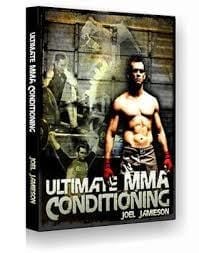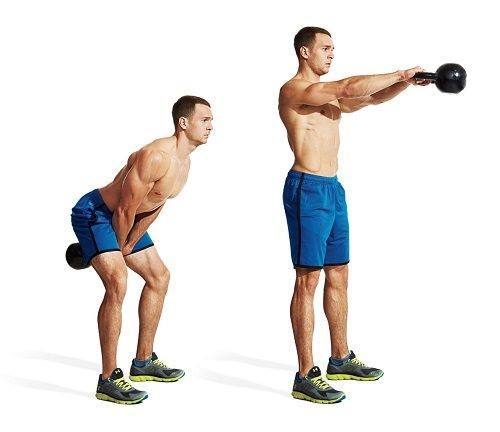Combat Arts Strength Training: Foundation of a Fighters Success
In combat sports, the role of Combat Arts Strength and Conditioning to achieve peak performance cannot be overstated. Within that, strength training, is a critical part of every fighter's training regimen, from boxing to wrestling, from Brazilian Jiu-Jitsu (BJJ) to Mixed Martial Arts (MMA). Take, for example, UFC Middleweight Champion Israel Adesanya, who regularly incorporates strength training into his routine, contributing significantly to his explosive power and speed.
Why is Strength Training Important for Martial Arts?
Strength training is a physical exercise that involves the use of resistance to induce muscular contraction, which builds strength, anaerobic endurance, and size of skeletal muscles. Whether Mixed Martial Arts (MMA) or Brazilian Jiu-Jitsu; it forms an integral part of any fighter's regimen - UFC Lightweight Champion, Charles Oliveira, is well known for his intense strength training sessions, which enhance his endurance and muscular power.
Strength training, a core aspect of physical conditioning, is an exercise regimen that develops muscular strength and endurance through resistance. The goal of this training is to gradually increase the ability of muscles to resist force through free weights, weight machines, or body weight. Combat sports from karate to MMA and BJJ benefit greatly from this form of training. A clear understanding of strength training lays a solid foundation for designing the ultimate combat arts strength and conditioning program.
The Triumvirate of Strength Training: Overload, Rest, and Muscle Fatigue
Overload, rest, and muscle fatigue form a critical triangle that guides any effective strength training regimen. Overloading means challenging the muscles by continuously increasing the weights, repetitions, or types of exercises. Rest is crucial for muscle recovery and growth, while muscle fatigue is a sign of effective training and necessary for building strength.
Strength Training's Role in Combat Arts
Combat strength is a game-changer in martial arts. In combat arts, strength training enhances overall power, amplifies the speed and force of strikes, increases endurance, and aids in injury prevention. The likes of Boxing and Wrestling legends, such as Mike Tyson and Kurt Angle, have showcased the impressive benefits of strength training.
It not only helps enhance the power and speed of punches and kicks but also fortifies the body's resistance to blows. As a combat athlete, it is crucial to power up your fight muscles to gain an edge in the ring.
Beyond Traditional Strength: Embracing Functional Strength Training
Functional Strength Training takes combat strength to the next level by focusing on training the muscles to work together and preparing them for daily tasks by simulating common movements. For instance, Georges St-Pierre, a former UFC champion, incorporates gymnastic workouts into his functional strength training, aiding in enhancing agility and core strength.
Techniques Uncovered: The Art and Science of Strength Training
Building Muscle with Body Weight Training
Body weight training is a convenient and effective method of strength training that utilizes your own body weight as a resistance tool. This form of exercise includes push-ups, squats, pull-ups, and lunges. Renowned BJJ fighter Marcelo Garcia is known for prioritizing body weight exercises in his training regimen to improve his ground fighting skills.
The Fundamentals of Weight Lifting: Elevating your Combat Game
Weight lifting is a fundamental part of strength training that focuses on developing muscular strength and size. Essential exercises like deadlifts, bench presses, and squats form the basis of weight lifting. UFC fighter Dustin Poirier is a proponent of weight lifting and incorporates it into his training regimen, improving his knockout power and grappling strength.
Which Strength Training Program is Best for Combat Athletes
The best strength training program for combat athletes combines weight lifting for building muscle, bodyweight exercises for functional strength, and resistance training for endurance. Such a program is individual-specific, catering to an athlete's unique needs and goals. A fitting example is the training regimen followed by Conor McGregor's Strength & Conditioning Coach John Connor, which is tailored to McGregor's specific requirements.
Strength Training Programs & Example Routines
There are many amazing strength training routines and strength and conditioning programs available, depending on what focus is desired, for instance, only martial arts strength training programs, or weight lifting focus, or MMA, UFC professional fighter focus, or a program that utilizes a mix of above. These also vary based on time commitments, goals, sports specific outcomes, availability, home, dojo or martial arts studio, or gym, etc.
There are many approaches to this issue, so other articles will address other program approaches. This article will lay out 5 of the most popular and effective strength and conditioning programs around and give examples of how these could be used to become the best martial artist possible.
Beyond 5/3/1 by Jim Wendler
This first strength training approaches uses a weight lifting approach. This program requires a gym or weight room to implement, and a buddy for lifting support. This first approach has a great record for massively increasing brute physical strength.
This is an incredible and very popular strength and conditioning program developed by Jim Wendler, author of the popular book, 5/3/1: The Simplest and Most Effective Training System to Increase Raw Strength, and his excellent follow up, Beyond 5/3/1: Simple Training for Extraordinary Results. Wendler is known for his body busting 5/3/1 power program. Jim played football and graduated from the University of Arizona where he was a three-letter winner.

He went on to squat 1000 pounds in competition and is an accomplished Elite Lifter with a 2,375 pound total - safe to say he knows a thing or two about strength training.
5/3/1: Three to Fours Days a Week
The beauty of Wendler’s 5/3/1 program is that it is simple and will get you strong as a bull. You need to assess your 1 rep max on each of the “Big 4” lifts (Squat, bench press, deadlift and over head press) and then take 90% of said 1 rep max. You will build your routine around these numbers.
Typically, a traditional 5/3/1 program will require training three or four days a week. Each workout day will be centered around one core lift, so for example, Monday work squats, Wednesday do bench presses, etc., so that each workout day will focus on a different area.
Each training cycle lasts four weeks, with the following set/rep goals for each key lift:
Week | Activity |
|---|---|
1 | 3 sets x 5 reps, or 65%, 75%, and 85% for five reps each + assistance work |
2 | 3 sets x 3 reps, or 70%, 80%, and 90% for three reps + assistance work |
3 | 3 sets x 5 reps, at 75%, 85%, and 95% for five + assistance work |
4 | Deload - slash intensity by lowering weight to avoid over-training and recover. |
Week | Activity |
|---|---|
1 | 3 sets x 5 reps, or 65%, 75%, and 85% for five reps each + assistance work |
2 | 3 sets x 3 reps, or 70%, 80%, and 90% for three reps + assistance work |
3 | 3 sets x 5 reps, at 75%, 85%, and 95% for five + assistance work |
4 | Deload - slash intensity by lowering weight to avoid over-training and recover. |
After using this program for a month, increasing optimal max by five to 10 pounds for the next month, each month, is a reasonable goal. Rinse and Repeat.
If this sounds like too much workload on top of regular Martial arts training, then use a scaled version, created by the man himself, specifically designed for MMA athletes. Jim Wendler says:
“As with any sport, MMA requires that you are strong in the low back, legs, arms, chest, shoulders and abs. Like all sports, strength is one of many things that need to be trained. This is unlike the strength sports – thus more abilities must be trained and MORE TIME must be spent on them.
So you can’t spend all day in the weight room. You have to be efficient in the weight room; you have to choose exercises that mean something and that carry over. Since there are many abilities that must be trained and much time devoted to practice (and this practice being very difficult), he proposes the following.”
5/3/1: Two Days a Week
Day One - Squat and Bench Press plus assistance work
Day Two - Deadlift and Over-head press plus assistance work
“Assistance work should be plenty of lat and upper back work, arm work or anything that you need personally for injury prevention”

“The farther away from fight, you can do more work that makes you tired, sore and effects your skill training. Closer to fight, you can do LESS work (or none at all) that makes you tired, sore and effects your skill training.”.”
Jim Wendler
"Starting Strength System" by Mark Rippetoe
This second strength training approach was developed by legendary strength and conditioning coach and author, Mark Rippetoe. It gives total body strength that lasts and translates straight into martial arts training, mats practice, and intense events.
The Starting Strength System makes use of the body's most basic movement patterns – barbell exercises that involve all the body’s muscle mass – utilized over the longest effective range of motion and loaded progressively, to force the adaptations necessary for increased strength.
Unlike other popular exercise protocols, Starting Strength is a training system – a long-term process designed for getting stronger over time, not a random collection of exercises that just make you hot, sweaty, sore, confused, and tired today.”
Perform the program on a 3 days per week schedule, on non-consecutive days, i.e., Mon/Wed/Fri, Tues/Thurs/Sat or similar, following a workout A, B, A, B, rotation.
Ready To Challenge Your Own Strength Capabilities?
Learn How to Design a Program Now!
Starting Strength System: Workout A
Exercise | Sets | Reps |
|---|---|---|
Barbell Squats | 3 | 5 |
Bench Press | 3 | 5 |
Dead Lift | 1 | 5 |
Barbell Squats | Bench Press | Dead Lift |
|---|---|---|
3 sets x 5 reps | 3 sets x 5 reps | 1 set x 5 reps |
Starting Strength System: Workout B
Exercise | Sets | Reps |
|---|---|---|
Barbell Squats | 3 | 5 |
Standing Military Press | 3 | 5 |
Bent Over Rows | 3 | 5 |
Barbell Squats | Standing Military Press | Bent Over Rows |
|---|---|---|
3 sets x 5 reps | 3 sets x 5 reps | 3 sets x 5 reps |
Starting Strength System Workout Structure
Workout Plan: Week One
Day | Workout |
|---|---|
Monday | A |
Wednesday | B |
Friday | A |
Workout Plan: Week Two
Day | Workout |
|---|---|
Monday | B |
Wednesday | A |
Friday | B |
This may seem incredibly simple, and it is! It’s also very effective. The no thrills programming and exercise choice make it a great routine for those who don’t want to have to dive deep into crazy programming and confusing routines. Starting Strength is a great program to develop full body strength that carries over onto the mats, giving results without the fuss.
Combat Strength 101

6 Week Sample Strength Training Program
Week 1 - 2
Exercise | Day 1 | Day 2 | Day 3 |
|---|---|---|---|
Barbell Squats | 4 sets x 5 reps | - | 2 sets x 5 reps |
Pull - Ups | 3 sets x 6 reps | 3 sets x 5 reps | - |
Bench Press | - | 3 sets x 5 reps | 2 sets x 6 reps |
Bent-Over Rows | 3 sets x 5 reps | - | - |
Shoulder Press | - | 3 sets x 8 reps | 2 sets x 5 reps |
Stiff Leg Deadlift | - | 2 sets x 5 reps | - |
Exercise | Barbell Squats | Pull - Ups | Bench Press | Bent-Over Rows | Shoulder Press | Stiff Leg Deadlifts |
|---|---|---|---|---|---|---|
Day 1 | 4 sets x 5 reps | 3 sets x 6 reps | - | 3 sets x 5 reps | - | - |
Day 2 | - | 3 sets x 5 reps | 3 sets x 5 reps | - | 3 sets x 8 reps | 2 sets x 5 reps |
Day 3 | 2 sets x 5 reps | - | 2 sets x 6 reps | - | 2 sets x 5 reps | - |
Week 3 - 4
Exercise | Day 1 | Day 2 | Day 3 |
|---|---|---|---|
Barbell Squats | 5 sets x 5 reps | - | 3 sets x 3 reps |
Pull - Ups | 4 sets x 6 reps | - | 3 sets x 6 reps |
Bench Press | - | 3 set x 8 reps | - |
Bent-Over Rows | 3 sets x 5 reps | - | 2 sets x 5 reps |
Shoulder Press | - | 3 sets x 8 reps | - |
Stiff Leg Deadlift | - | 3 sets x 8 reps | 2 sets x 6 reps |
Exercise | Barbell Squats | Pull - Ups | Bench Press | Bent-Over Rows | Shoulder Press | Stiff Leg Deadlifts |
|---|---|---|---|---|---|---|
Day 1 | 5 sets x 5 reps | 4 sets x 6 reps | - | 3 sets x 5 reps | - | - |
Day 2 | - | - | 3 sets x 8 reps | - | 3 sets x 8 reps | 3 sets x 8 reps |
Day 3 | 3 sets x 3 reps | 3 sets x 6 reps | - | 2 sets x 5 reps | - | 2 sets x 6 reps |
Week 5 - 6
Exercise | Day 1 | Day 2 | Day 3 |
|---|---|---|---|
Barbell Squats | - | 5 sets x 5 reps | - |
Pull - Ups | 2 sets x 8 reps | - | 2 sets x 6 reps |
Bench Press | 4 sets x 6 reps | 2 sets x 6 reps | - |
Bent-Over Rows | 3 sets x 5 reps | - | 2 sets x 5 reps |
Shoulder Press | - | 3 sets x 8 reps | - |
Stiff Leg Deadlift | 4 sets x 5 reps | - | 3 sets x 8 reps |
Exercise | Barbell Squats | Pull - Ups | Bench Press | Bent-Over Rows | Shoulder Press | Stiff Leg Deadlifts |
|---|---|---|---|---|---|---|
Day 1 | - | 2 sets x 8 reps | 4 sets x 6 reps | 3 sets x 5 reps | - | 4 sets x 5 reps |
Day 2 | 5 sets x 5 reps | - | 2 sets x 6 reps | - | 3 sets x 8 reps | - |
Day 3 | - | 2 sets x 6 reps | - | 2 sets x 5 reps | - | 3 sets x 8 reps |
Alternatives to Gym Training
There are plenty of ways to get strong, lean, and move better with other methods such as bodyweight training programs and unconventional methods such as kettlebells. This section will dive into some of these strength training modalities.
Unlock Your True Potential and Discover the Difference with Strength Training!
Body Weight Strength Training
To get strong using only body weight will require more stimulus once a good level of baseline strength has been established. Travis Stoetzel, strength and conditioning coach who owns and operates, The Forged Athlete Gym, in Omaha, NE, has a certain protocol of self-monitoring tests using the ability to perform a number of exercises to ascertain baseline strength.
Test yourself on the movements below to get your baseline. You should easily be able to perform the following first. If the exercises below are easy, then move on to loaded movements. If these are difficult, or not quite there yet, practice these until easy, before moving onto loaded movements:
Working on these prerequisites of strength will give a great starting point and get you savagely strong. Once these are easy, it is time to move onto advanced variations or add in weights.
Body Weight Workout
Master the basics! Squats, push-ups, pull us, rows, lunges, along with sprints, jumping, climbing, and crawling. These provide the foundation for all further skill development. Once those are down, then move on to the more advanced movements and look at incorporating more than just body weight, for example, add in ankle or wrist weights.
An example of a basic body weight workout is as follows:
Repeat this routine times through, with 120 seconds rest between sets, for an effective, full-body, body weight training program to get strong and mobile.
Kettlebell Workout
Some people like to break the monotony of linear training programs that often contain the same movements and exercises repeated time and again. This is where unconventional tools can come into play. Only one item is required to use a Kettlebell exercise program, along with a little moving space in the house, garage, outside, etc. Kettlebells are convenient, travel with you, all-inclusive training program, and the investment for a kettle bell is very reasonable, and one time only.

Kettlebells are not a new exercise approach. Kettlebells originated in Russia about 350 years ago. They build muscle quickly but burn fat a little slower than some other routines, so weight on the scale may not go down that quick since muscle is swiftly being built, keeping weight higher, even though conditioning is occurring.
The kettlebell swing is an ideal place for a new user to begin. It works the entire body, including arms, legs, abs, glutes, shoulders, wrists, etc. The Swing builds muscles and strength fast, cuts fat, boosts endurance, improves posture, and increases cardiovascular health.
The kettlebell swing is a movement that should be in everyone’s arsenal. The investment in these tools can be reasonable given the level of effort put into utilizing and perfecting form.
The Elite are elite because they get nail the basics. That said, here are a few workout moves to start with, but direct training by an expert kettlebell coach is advised to ensure optimized workout results and reduced risk of injury.
Kettlebell Swing Routine
Begin in a squat position, feet slightly wider than shoulder width, upper back contracted and strong, spine neutral and gaze ahead.
Brushing your arms on your inner thighs, forcefully extend the knees and hips to accelerate the kettlebell up. Keep your arms straight while you project the kettlebell up and away from the body. At the top position, the kettlebell should be pointing forward, arms straight or slightly bent at the elbows, cushion the moments weightlessness and brace of the deceleration as the bell travels down.
Absorb the kettlebell weight as it follows the same path back to the starting position. Make sure to keep your arms straight the entire time.

Repeat immediately! Try 3 sets of 20 swings to get that posterior chain firing.
The Kettlebell Swing and the Kettlebell Turkish Get Up are super effective for strengthening core, legs, back muscles, and an excellent place to begin a kettlebell strength and conditioning routine. The Turkish Get focuses on small stabilizing muscles and creates a rock-solid foundation.
Beginners often push too quickly and end with injuries. The Kettlebell Turkish Get Up slows you down, shows if a weak core, poor mobility, or weak stabilizing muscles need strengthening. Go here to watch a video illustrating the correct technique.
Looking Ahead: Innovations in Combat Strength Training
As combat sports continue to evolve, so do the approaches to strength training. Coaches and trainers are constantly innovating, integrating technology, and applying scientific research to optimize strength training programs.
For instance, Phil Daru, a respected strength and conditioning coach for several top-level MMA fighters, incorporates sports science to individualize and enhance his athletes' training plans.
Building Combat Strength is a Journey, Not a Destination
Strength training plays a pivotal role in combat sports, from Boxing to MMA. Its benefits extend beyond merely building muscle, enhancing speed, and bolstering endurance; it aids in injury prevention, too.
With a myriad of techniques available and constant innovations in the field, the journey of strength training for combat athletes is an ever-evolving process. Hungry for more information? Check out Combat Arts Advanced Conditioning Techniques Part I as we delve deeper into the fascinating world of strength and conditioning in combat sports.

Frequently Asked Questions
Do MMA Fighters Lift Weights?
Yes, MMA fighters do lift weights as a part of their strength and conditioning routine. Weight training helps to improve the overall power and strength that fighters need to deliver and resist strikes, grapples, and takedowns. However, the focus is not on lifting the heaviest weights, but rather on improving functional strength that directly translates to MMA performance.
What Weight Training is Best for MMA?
The best weight training for MMA blends functional strength training, explosive power training, and muscular endurance training. Compound movements such as squats, deadlifts, and bench presses are excellent for building functional strength. Exercises like power cleans and kettlebell swings can enhance explosive power, crucial for strikes and takedowns. Lastly, performing resistance exercises with lighter weights and higher repetitions can improve muscular endurance, enabling fighters to maintain strength over the course of a fight.
Is Weight Training Important in MMA?
Yes, weight training is crucial in MMA. It improves an athlete's ability to generate force in strikes, resist opponents' attacks, and execute grappling techniques. By building muscular strength and power, weight training contributes significantly to an MMA fighter's performance. It should be noted, though, that weight training is one part of a larger training regime that should also include cardio conditioning, flexibility, and sport-specific training to ensure a well-rounded fitness level.
What is the Ideal Weight Training Routine for an MMA Fighter?
An ideal weight training routine for an MMA fighter should be diverse, focusing on different aspects of strength. This might include compound lifts such as squats and deadlifts for overall strength, explosive exercises like power cleans and kettlebell swings for power, and circuit training with lighter weights for muscular endurance. The routine should be adjusted based on the fighter's current strength levels, specific goals, and upcoming fights. It's also important to allow adequate recovery time between weight training sessions to prevent overtraining and injuries.
Can You Train for MMA Without Weights?
While weight training is beneficial for MMA, it is possible to train without weights. Bodyweight exercises such as push-ups, pull-ups, burpees, and lunges can help improve strength and endurance. Additionally, sport-specific drills, sparring, and cardio exercises can contribute to overall fitness and fight readiness. However, for maximum strength and power development, including some form of resistance training – whether with weights, resistance bands, or other equipment – is typically beneficial.
